If you’re like me, you probably keep a wide variety of chocolates around just because you want to. Whether it's to satisfy a craving, a quick sugar high, or just because you like to be prepared to bake, chocolate is an essential good.
However, what happens when we run out of these pantry staples, when you need to substitute chocolate (or just don’t have enough!)? Worry not, because I’ve compiled the best substitutes for white chocolate, milk chocolate, and dark chocolate in your favorite recipes.
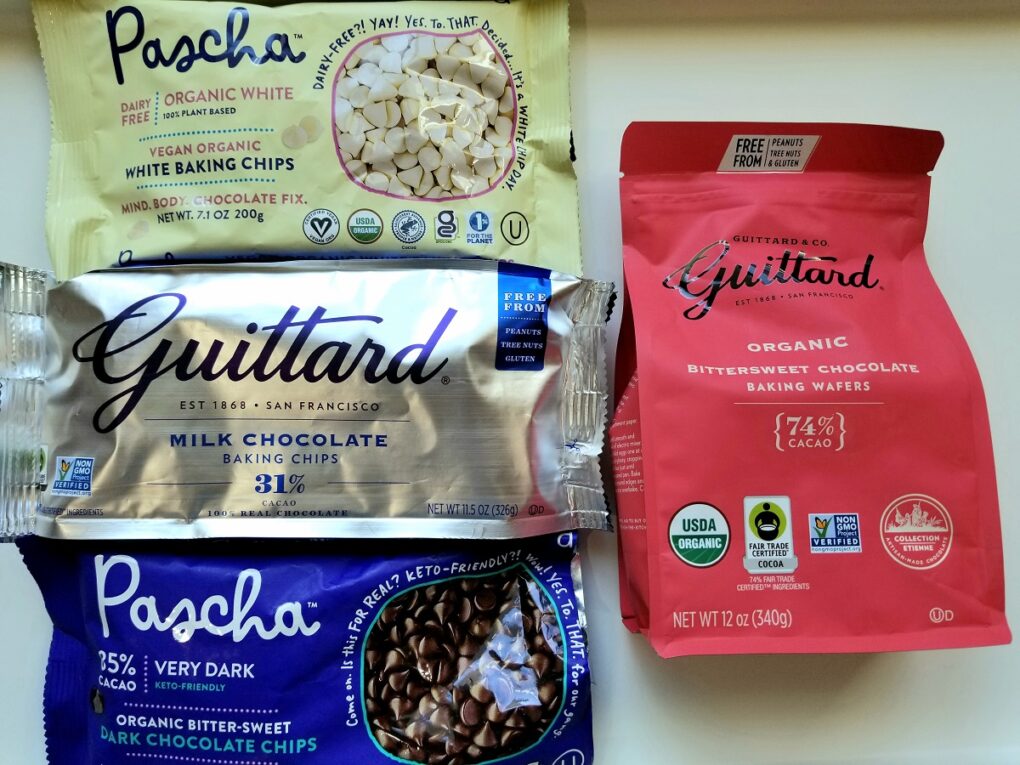
Jump to:
- What is Chocolate?
- How is Chocolate Made?
- What Are the Types of Chocolate?
- How to Use Chocolate (Recipes)
- Best Chocolate Substitutes
- Alternatives to White Chocolate
- Alternatives to Milk Chocolate
- Alternatives to Dark Chocolate
- Chocolate Alternatives to Skip
- Frequently Asked Questions
- Have you tried any of these substitutes?
- 📖 Recipe
- 💬 Comments
What is Chocolate?
Derived from only one ingredient, the cacao bean, chocolate comes in many forms, from liquid or paste to solid. It can be consumed on its own, or as a flavoring or added texture for many dishes.
Cacao beans or cocoa beans are actually the seeds of the Theobroma cacao tree, which is native to lowland rainforests of the Amazon and Orinoco river basins. It now grows in the wet lowland tropics of Central and South America, West Africa, and Southeast Asia.
Since the Olmec civilization (19th–11th century BC), cocoa beans have been utilized to make a beverage (usually a ceremonial drink) and as currency.
The bulk of Mesoamerican peoples, including the Maya, Toltecs, and Aztecs, first cultivated the cacao tree more than 3,000 years ago, with the cacao tree being domesticated 2,000 years prior in modern-day Ecuador.
The cocoa tree was revered by the Mayans, who thought of chocolate as a meal fit only for the gods (the scientific name for cacao loosely translates as ‘food of the gods’). Cocoa bean-based beverages were only prepared for royalty and the Aztec emperor.
Following the fall of the Aztec empire, the Spanish conquistadors started experimenting with cocoa in savory meals; the rich chili-cocoa sauce known as mole poblano is possibly one of the earliest examples.
Italians were among the first people in Europe to utilize cocoa as a spice in sweets, and to make some of the earliest chocolate desserts by adding sugar. Cocoa has a whole host of benefits. For one, the dietary fiber in cocoa helps to maintain digestive health and gives people a feeling of fullness.
The mineral richness of cocoa is exceptional, with particularly high concentrations of iron, copper, phosphorus, and magnesium. Phosphorus and magnesium assist in maintaining strong bones, while iron and copper aid in the distribution of oxygen-rich blood cells throughout the body.
Cocoa is also high in antioxidants, which are beneficial compounds that fight free radical oxidative damage. Someone wise once said, “Chocolate is happiness that you can eat.” This is actually quite true and based on science.
According to studies, chocolates have a high amount of the amino acid tryptophan, which is the base material in the production of the feel-good neurotransmitter serotonin. This natural component induces the production of endorphins, and therefore has the potential to make us happy.
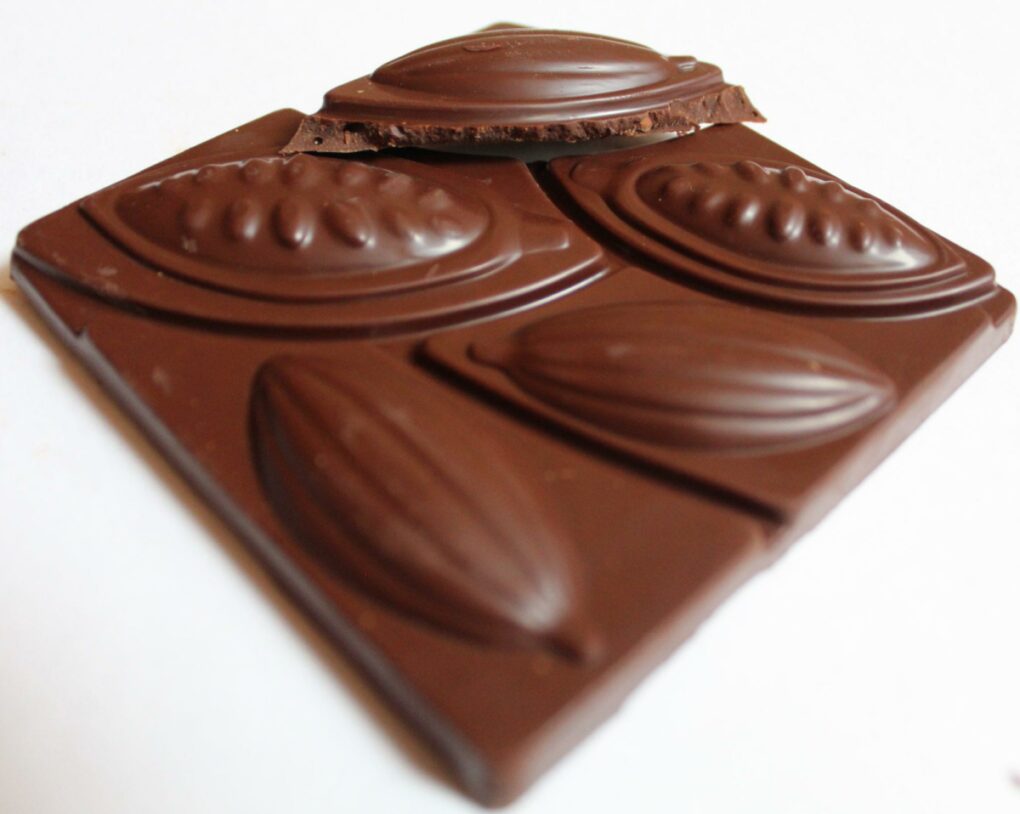
How is Chocolate Made?
Cocoa is physically harvested by farmers in a tropical forest, and many fruits are needed to make chocolate. Cocoa pods, the size of a football, are gathered and then processed by bulk fermenting, sun-drying, roasting, peeling, and then grinding the beans over the course of a few months.
To refine cacao into chocolate, the beans are heated and ground to produce chocolate liquor. Additionally, sometimes the beans are pressed to remove some of the cocoa butter, which has higher value in the cosmetics industry.
Chocolate liquor is then blended with milk and sugar to add flavor and cut the bitterness. To create the various types of chocolate, the cocoa mass is re-blended with some of the pressed cocoa butter and milk & sugar in various amounts.
Characteristics of high-quality chocolate include a glossy sheen from the well-shaped cocoa butter, and a strong snap when broken in half. Sometimes when exposed to heat you’ll notice that some cocoa butter rises to the top when the chocolate melts and then resolidifies, creating "chocolate bloom" (that prominent white dust).
Good chocolate should have no bloom and a smooth mouthfeel, not one that is waxy or gritty. It literally melts in your mouth, because the melting point of cocoa butter is lower than the body's temperature of 98.6°F.
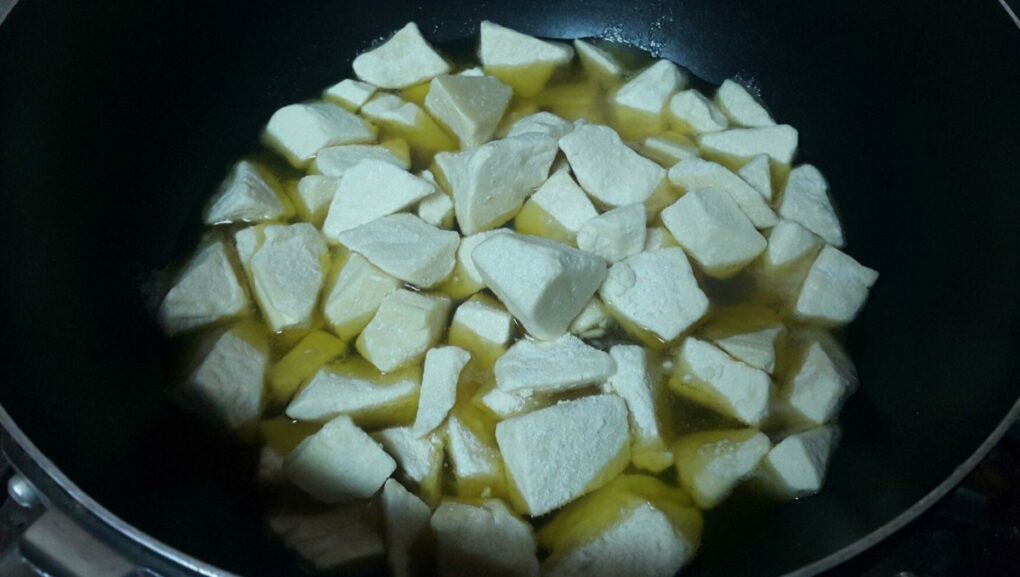
What Are the Types of Chocolate?
The first chocolate bar was produced in Turin in the late 19th century by a Frenchman named Doret. Every chocolate has a unique flavor depending on how it is made, including the origin of the cacao beans, roasting, and the proportions of cocoa butter, sugar, and chocolate liquor.
Dark chocolate contains chocolate liquor, often cocoa butter, sugar, and usually lecithin and vanilla. The ingredients are similar for milk and white chocolate but with more sugar and milk than the former, and no cocoa solids in the white chocolate.
The amount of chocolate liquor in each bar is sometimes indicated as a percentage on the packaging of the chocolate itself, though cheaper bars dodge the question. That’s because the remainder in the bar is sugar.
The intensity and complexity of the chocolate flavor increase with the cacao percentage. White chocolate is a delicious, creamy, and sweet variety of chocolate. It’s made entirely of cocoa butter (the fat of the cocoa beans), milk powder, lecithin, and sugar.
It contains no cocoa solids, which are the primary source of chocolate flavor. Real white chocolate is seldom bright white, but rather creamy off-white to buttery yellow. The most popular variety of chocolate consumed is milk chocolate, which is also widely used to make confections, desserts, and baked goods.
Milk chocolate, according to the Food and Drug Administration (FDA), must include at least 12% milk, 10% chocolate liquor, plus additional sugar and cocoa butter. The distinctive feature of milk chocolate is the presence of a sizable amount of dairy.
Milk chocolate varies, but there should at least be 35% cocoa solids. The more chocolatey the flavor, the more chocolate liquor is in there. Dark chocolate is for serious connoisseurs. It has a stronger flavor than milk chocolate, and a good-quality bar balances the cocoa concentration and natural sweetness.
Dark chocolate isn’t separately defined by the US FDA, but has to have 35% or more cocoa (liquor or butter) to be legally called ‘chocolate’. Semisweet and bittersweet chocolate fall under the category of "dark chocolate."
Semisweet chocolate often has a higher sugar content and is much sweeter than any other type of chocolate. On the other hand, bittersweet chocolate typically has a 33-40% sugar content.
Small amounts of milk may be present in some dark chocolates, but usually not enough for them to qualify as milk chocolate.
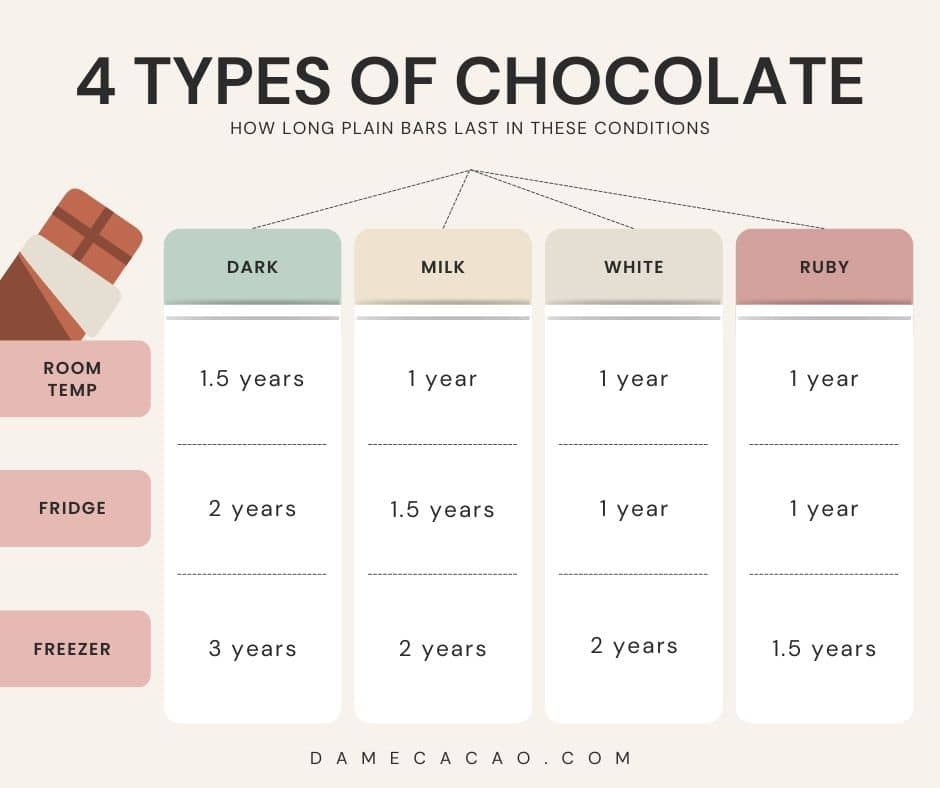
How to Use Chocolate (Recipes)
Chocolates are the ultimate present. There is a chocolate gift for everyone on your list, whether they prefer luscious DIY hot chocolate gift boxes, elegantly crafted truffles, vegan chocolate bars, a decadent chocolate cake, or some fudgy brownies.
But chocolate is also a widely popular baking ingredient across the globe. A lot of dishes, including milkshakes, candy bars, pastries, and cereals have chocolate as the key ingredient. Some people even bake chocolate itself to make a treat known as caramelized white chocolate.
White chocolate can take the lead in desserts or play a supporting role next to bittersweet chocolate, tart berries, or citrus. It’s frequently used as a garnish or added to cookies and other baked products, including scones, biscotti, cheesecakes, and more. Some popular white chocolate recipes are:
- White chocolate Macadamia Cookies
- Raspberry and White Chocolate Cheesecake
- Passion Fruit and Pistachio Semifreddo
- Creamy White Chocolate Panna Cotta
- Strawberry Mousse Cake
- Blondies
- Scones
Many desserts, confections, and pastries use milk chocolate, which is also commonly enjoyed on its own. It may be used for tempering, chocolate molding, and enrobing desserts; due to its fat content, milk chocolate gives great texture to baked goods.
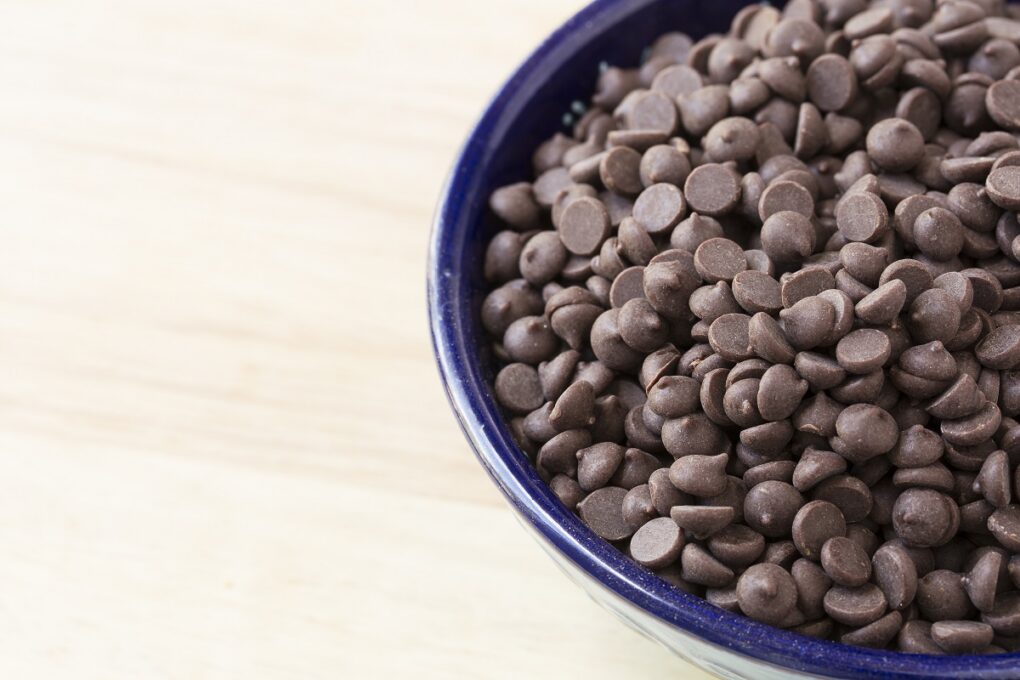
When used in no-bake recipes like sauces, as a garnish for baked goods, or as fillings or icings, milk chocolate is the easiest to work with. Here are some of our favorite milk chocolate recipes:
- Millionaire’s Shortbread
- Milk Chocolate Chip Cookies
- Chocolate Peanut Butter Cups
- Chocolate Fondue
- Brownie Cake
- Pound Cake
- S’mores
- Fudge
Generally the best chocolate to use in both sweet and savory recipes is dark chocolate. Make the cacao the star of the dish by highlighting its smooth and rich flavors.
Since many baking recipes frequently call for flour, cream, milk, and other flavor-diluting substances, the higher cocoa percentage ensures that the flavor will still be detectable by the end.
It can be used chopped up in cookies and is a fantastic option for a thick ganache, glaze, or icing. The same is true for using chocolate in savory dishes.
By using extremely dark chocolate in dishes like moles or stewed meats, the dish benefits from the depth of flavor in high-percentage dark chocolate. They really shine, adding a mild bitterness and nuttiness without any milk messing them up or overpowering the dish with sweetness.
Although a little sweetness might enhance dark chocolate, too much will cloud your palate. Because it’s less sweet and lower in sugar than its chocolate cousins, it’s a favorite dessert of the more health conscious among us. Some of the best dark chocolate recipes are:
- Decadent Chocolate Truffle Torte
- Sacher Torte
- Sea Salt Dark Chocolate Tart
- Dark Chocolate Raspberry Bar
- Salted Caramel Chocolate Pie
- Truffles
- Dark Chocolate Pudding
- Hot Chocolate

Best Chocolate Substitutes
Many chocolate recipes have been created with a particular chocolate variety in mind. In baking, replacing one type of chocolate with another when only a few ounces are called for isn’t a big deal.
The issue arises when a recipe calls for 4 to 6 ounces or more of chocolate, because that recipe has been formulated to balance all the ingredients, especially sugar and fat. A callous substitution may result in failure.
If you can‘t use the specific type called for in the recipe, read on to find possible alternatives to chocolate. Of course, the easiest option is to swap for whatever chocolate bar you have at home. When using chocolate bars instead of chocolate chips, you can cut any chocolate bars into the correct-sized pieces.
No matter what you need them for, these chocolate substitutes will enable you to skip a trip to the grocery store, whether you need to replace chocolate for cakes, pies, tarts, or cookies.
Alternatives to White Chocolate
Milk Chocolate
If you don't have any white chocolate in your pantry, you can replace it with milk chocolate. Just keep in mind that the final texture of your baked goods and the flavor will be slightly off compared to the original, but still be delicious.
Milk, sugar, and cocoa butter are the ingredients of both white and milk chocolate. The only additional ingredient that gives milk chocolate its brown color is cocoa solids, in the form of chocolate liquor.
A low cacao percentage milk chocolate is the closest flavor match to white chocolate; use it as a 1:1 white chocolate substitute.
Macadamia Nut Butter
While it won't really add any of the sweetness of white chocolate, you can use macadamia nut products in place of a variety of forms of white chocolate.
Try either macadamia nut halves in place of white chocolate chips, or buy or make macadamia nut butter, which can serve a similar function to melted white chocolate in recipes.
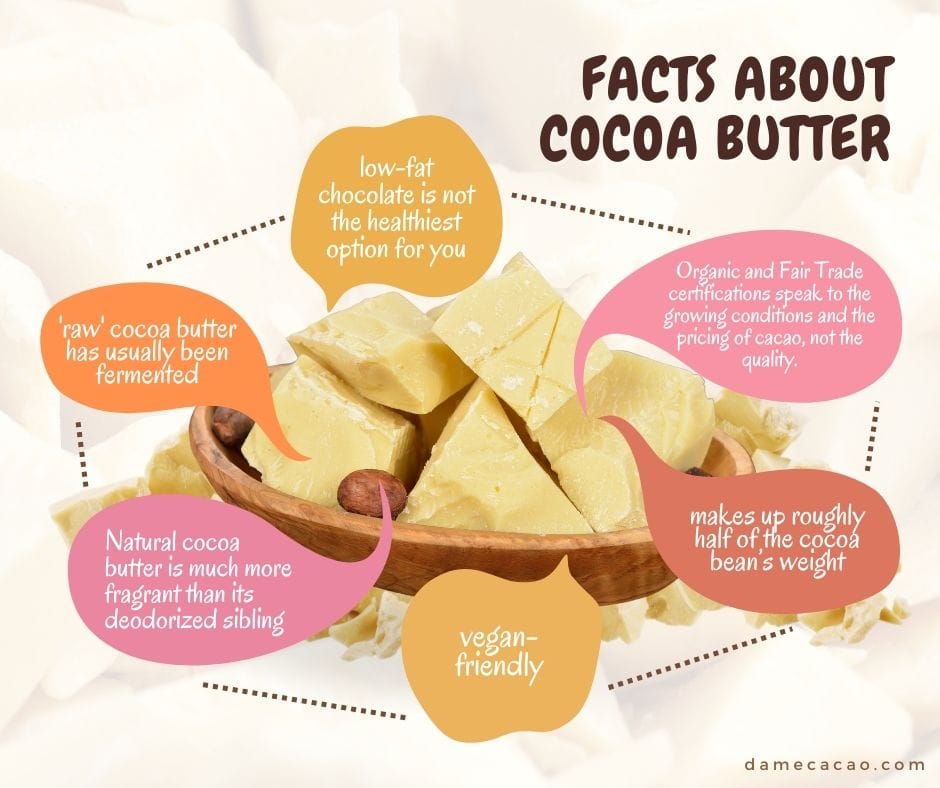
White Chocolate Chips or Bars
Milk chocolate is not the best alternative if the final product must have a light appearance. When it comes to substituting white chocolate, you can use different forms or sizes of white chocolate interchangeably by weight.
If you have a white chocolate bar, use that as a swap for white chocolate chips and vice versa. Not much else can be used as a substitute. Working on a recipe that instructs you to slice up a bar of white chocolate and include it in the dough for cookies, brownies, or muffins?
White baking chocolate can then be replaced with white chocolate chips. If you don’t have a scale, one ounce of white baking chocolate can be swapped out for three tablespoons of chips.
If your recipe calls for melting white chocolate, do not use this substitution. White chocolate chips tend to have more stabilizers and less cocoa butter, to help them maintain their shape in the oven.
White chocolate chips which use vegetable fat to replace cocoa butter could burn if you try to melt them.
Homemade White Chocolate
Most recipes with white chocolate are formulated such that they work best with a sweet and light flavor. So if you happen to have cocoa butter on hand (food grade, of course), you can actually make your own homemade white chocolate to sub directly.
The recipe linked here calls for cocoa butter, sugar, milk powder, salt, and vanilla bean. Most recipes can also be changed to use other kinds of chocolate instead of white chocolate, but doing so will inevitably result in a different baked good.
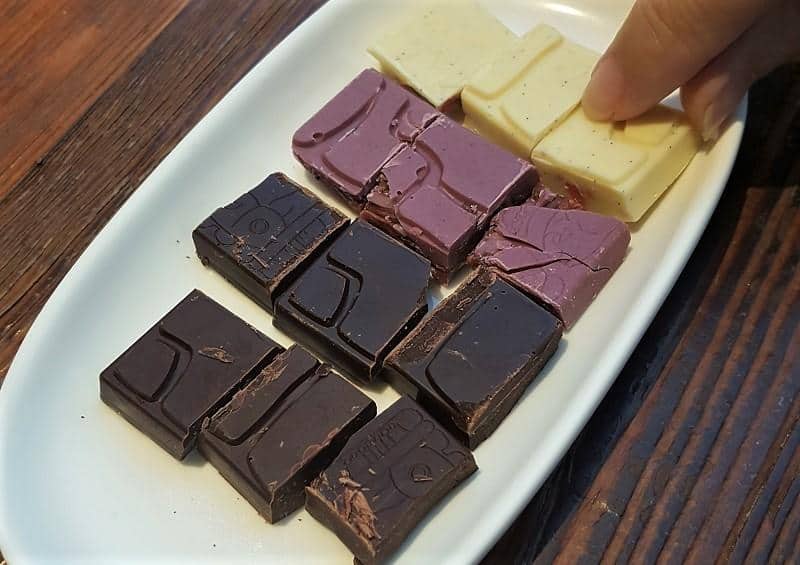
Alternatives to Milk Chocolate
White Chocolate + Dark Chocolate
A mixture of white chocolate and dark chocolate can be used in place of milk chocolate. This could be any sort of white chocolate or white chocolate substitute, as well as any type of dark chocolate or dark chocolate substitute (buttons, callets, baking chocolate, cocoa powder, etc.).
Your preferred milk chocolate strength will determine the ratio, but often I use 60% white chocolate and 40% dark chocolate to make the perfect semi-sweet milk chocolate.
Since the majority of commercially available dark chocolates don't include a high proportion of cocoa solids, you can easily swap them out for milk chocolate when baking, cooking, or creating desserts.
The flavor (in terms of chocolatiness) will be a little stronger, but I don't believe that's necessarily a bad thing. To be more specific, use 60 grams of white chocolate and 40 grams of dark chocolate in place of the 100 grams of milk chocolate called for in your recipe.
It would take around two-thirds of a cup of white and one-third of a cup of dark chocolate pieces to replace one cup of milk chocolate.
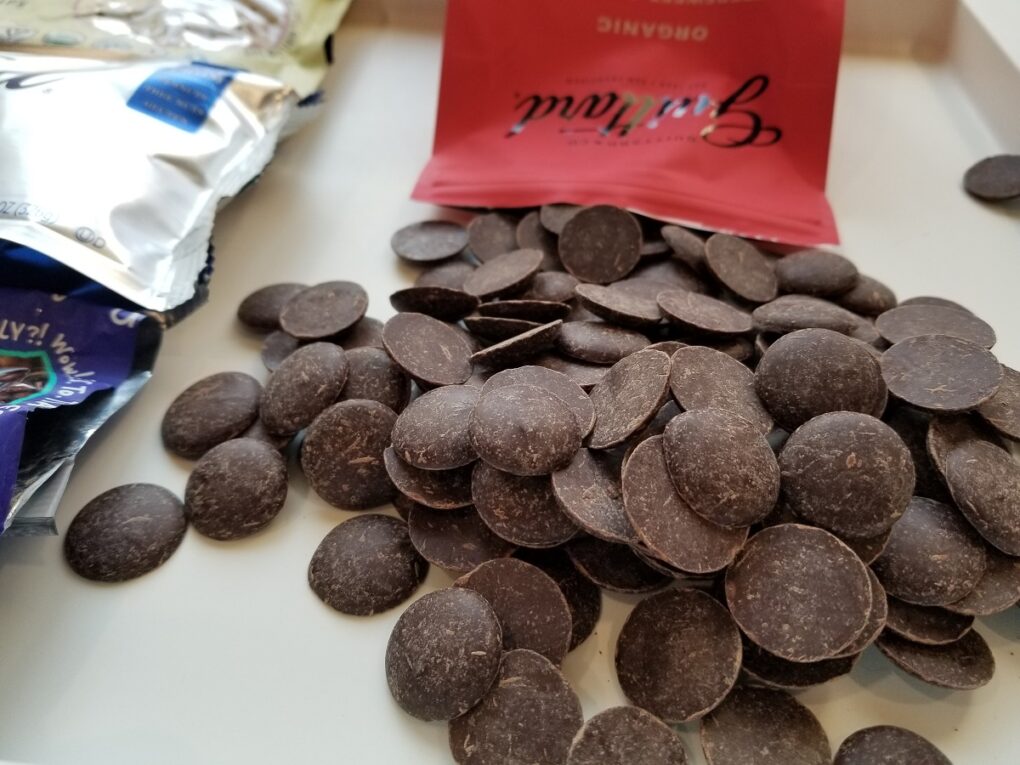
Milk Chocolate Bar or Milk Chocolate Chips
To ensure that your dish tastes the same as one made with milk chocolate, substitute the same amount of milk chocolate candy bar or chips with the amount of chocolate specified in the recipe. Any brand can be used in place of the recipe's milk chocolate.
Chop up the candy bars and make sure to measure by weight rather than volume. Although plain milk chocolate bars are preferred, you can substitute any flavor if you don't have any plain ones on hand.
Homemade Milk Chocolate
You can make homemade milk chocolate in place of real milk chocolate in a recipe using cocoa powder. Depending on what you are baking or preparing, you can either create the chocolate beforehand and then use it.
When you need to make milk chocolate beforehand, all you need are cocoa powder, cocoa butter, powdered sugar, and milk powder. Melt and whisk to combine all ingredients in a double boiler, pour into a mold, and set in the fridge.
Another way is to simply add the ingredients to the recipe. Depending on where you want to use it, add cocoa powder, oil (butter or shortening), sugar (granulated, stevia, or any other sweetener of choice), and milk (you can use whole, plant-based, or heavy cream).

Alternatives to Dark Chocolate
The basic ingredients to consider when replacing dark chocolate in a recipe are the fat in cocoa butter and the chocolate color and flavor from cocoa solids. Sugar is also important, but varies in ratio. This is especially useful to note when you substitute dark chocolate in recipes wherein you don't need dark chocolate chips’ texture and shape.
Cocoa Nibs
A less processed and less sweet kind of chocolate product is cocoa nibs. Although they lack sweetness, cocoa nibs have a strong chocolate flavor and a consistency comparable to roasted coffee beans.
They have a rich chocolate flavor that could be described as nutty and slightly bitter, making them an excellent alternative to dark chocolate. Use cocoa nibs in a 1:1 ratio as an alternative to chocolate.
Using cocoa nibs in place of dark chocolate is fantastic since it gives cakes both chocolate flavor and an extra crunch. Cocoa nibs are frequently swapped out for chocolate chips in many cookie recipes as a healthier option and a substitute when out of chips.
Use them in place of nuts in brittle or as sprinkles on ice cream or cupcakes. Nibs add a vast array of nutrients to the dish, plus when heated, cocoa nibs don't melt.
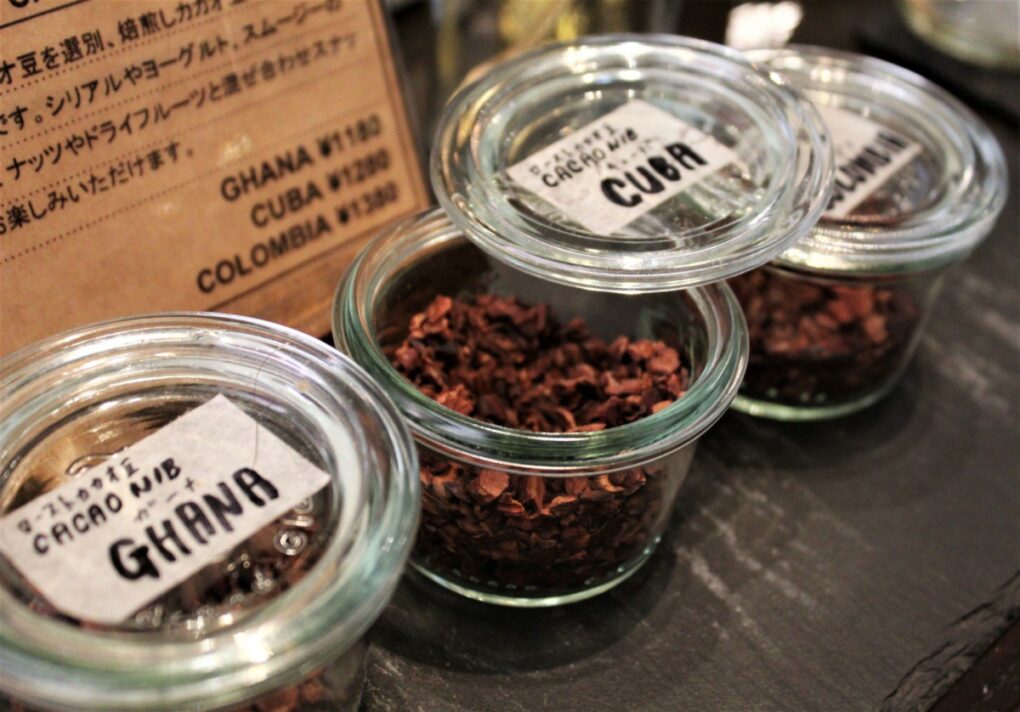
Homemade Cocoa Powder Chocolate
Cocoa powder or cacao powder is made from fermented, roasted cocoa beans that have usually been heated at a high temperature before being pressed to remove some fat.
To lessen acidity, cocoa powder is frequently alkalized (or dutch-processed) with chemicals during processing. The result is a powder that, when added to liquids, is less bitter and more soluble.
You can often even use cocoa powder as a direct substitute for bittersweet chocolate. When using cocoa powder to substitute for dark chocolate in baking, it needs to be in a recipe where you only need a chocolate flavor, or else you need to turn it into a homemade chocolate before using.
This chocolate alternative is not ideal for chocolate chip cookies, muffins, or anything that needs textured morsels of flavor coming from actual chips.
To make 2oz. of it, use 3 tablespoons of cocoa powder, 1 ½ teaspoons of butter or oil, and 1 to 1 ½ tablespoons of sugar. The sweetener should be added to the dry ingredients after the cocoa has been dissolved in the recipe’s liquids.
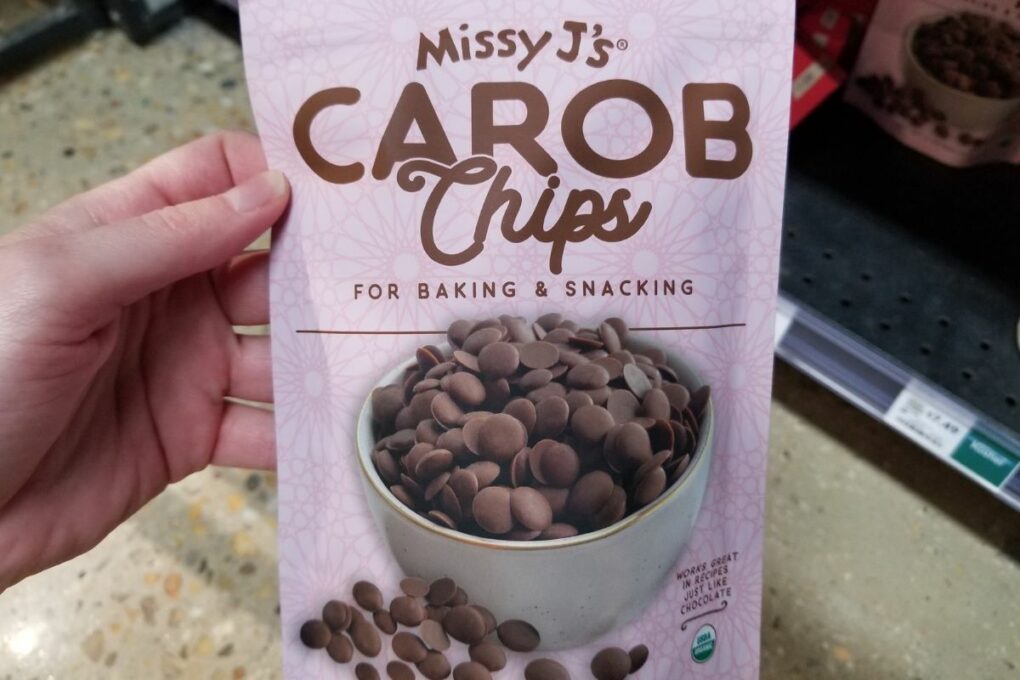
Carob (Chips)
The carob is a flowering evergreen Arabian tree, a sub-family of the legume family, Fabaceae. It is widely cultivated for its edible fruit pods, which are long and brownish-purple in color. The carob tree is native to the Mediterranean region and the Middle East.
The carob bean is extracted to produce a brown, flour-like powder, frequently used as a chocolate replacement. Carob is a tasty and healthful alternative to dark chocolate. It has a slightly nutty, roasted, sweet flavor with a close taste to dark chocolate.
Due to its high fiber content, antioxidants, low fat and sugar content, lack of caffeine and gluten; it tastes similar to chocolate and is a fantastic substitute. Losing weight and having fewer gastrointestinal difficulties are other health advantages, if chocolate seems to bother you.
If you have stomach problems or gluten sensitivity or are looking for a low-cal, and low-fat option, carob is a great substitute for dark chocolate. You can use carob chips the same way as you would dark chocolate chips in almost all recipes in a 1:1 ratio.
Use 1 tablespoon of oil or melted butter and 3 tablespoons of natural, unsweetened carob powder in a recipe that calls for two ounces of dark chocolate.
Baking Chocolate
When you initially think of baking, chocolate substitutes are often easier to come up with than in other contexts. Enter: baking chocolate, also known as unsweetened chocolate or chocolate liquor.
This bitter paste forms the base for both dark and milk chocolates, and can be purchased on its own to be used as a substitute for dark chocolate.
Similar to chocolate chips, pieces of baking chocolate can generally substitute for semisweet chocolate to bittersweet or dark chocolate with the help of a bit of sugar. For a sugar-free alternative to dark chocolate, simple sweeten with allulose, monk fruit, or erythritol.
Just be aware that some baking chocolate brands do not melt properly due to too low a proportion of cacao butter, so it’s always best to have tried that particular brand before using it.
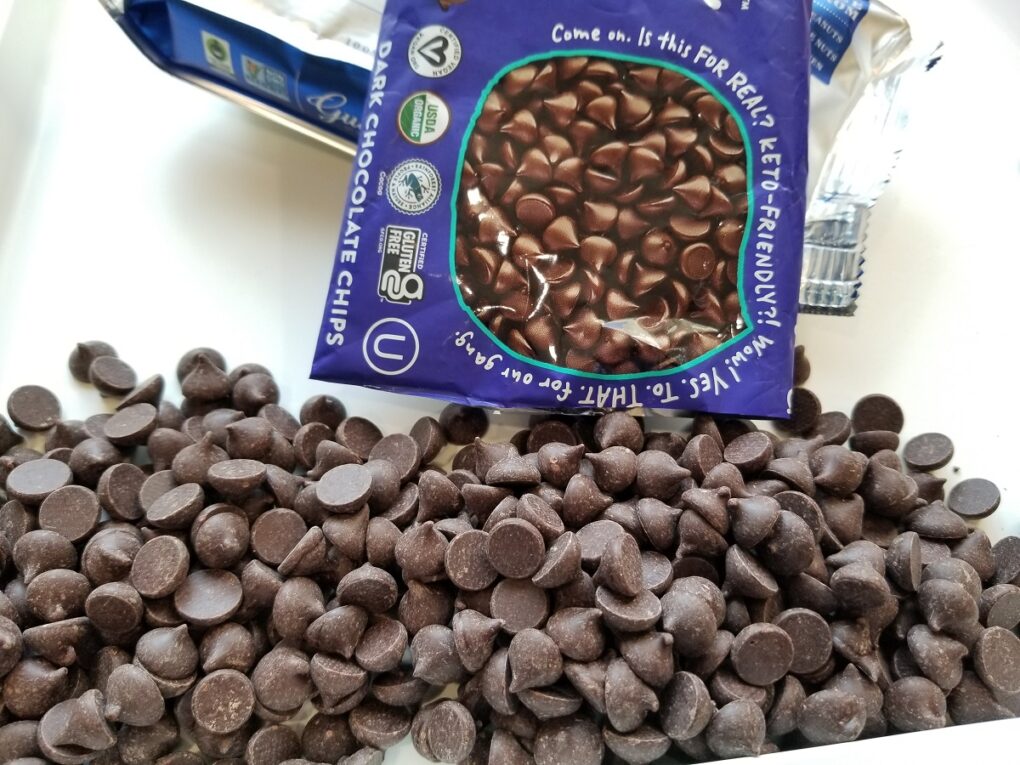
Chocolate Alternatives to Skip
Chocolate Syrup
Unless you've made it at home with cocoa powder, you're better off skipping the chocolate than swapping it for chocolate syrup.
This is because even in the best of cases, chocolate syrup is made primarily with sugar, adding just enough cocoa powder and coloring to mimic the appearance of chocolate without much of the real thing.
Hot Cocoa Mix
This chocolatey powder is usually made with more milk powder, sweetener, and hydrogenated oil than actual cocoa powder. Much like with the chocolatey syrups of our youth, hot cocoa mix usually contains very little cacao, making it a poor substitute for bittersweet chocolate (dark chocolate).
Frequently Asked Questions
The best substitute for chocolate can vary depending on the specific application, but options include carob, cacao nibs, or cocoa powder as alternatives for baking or flavoring dishes.
Carob is a popular option that tastes similar to chocolate but is not actually chocolate. It is a naturally sweet and caffeine-free alternative.
Yes, there are chocolate alternatives that do not contain cocoa. Some options use carob, while others may use alternative ingredients such as barley or nuts to mimic the flavor and texture of chocolate.
Yes, there are healthy versions of chocolate out there, including dark chocolate with high cocoa content, which contains antioxidants, offering health benefits when consumed in moderation. There are also recipes for healthier homemade chocolates, using natural sweeteners and unroasted cacao.
📖 Recipe

11 BEST Chocolate Substitutes (+2 to Avoid)
Ingredients
Alternatives to White Chocolate
- Milk Chocolate
- Macadamia Nut Butter
- White Chocolate Chips or Bars
- Homemade White Chocolate
Alternatives to Milk Chocolate
- White Chocolate + Dark Chocolate
- Milk Chocolate Bar or Milk Chocolate Chips
- Homemade Milk Chocolate
Alternatives to Dark Chocolate
- Cocoa Nibs
- Homemade Cocoa Powder Chocolate
- Carob Chips
- Baking Chocolate
Chocolate Alternatives to Skip
- Chocolate Syrup
- Hot Cocoa Mix
Instructions
- Choose the best chocolate substitute for your particular need.
- Identify exactly how much is needed for your recipe.
- Proceed with your recipe as planned!













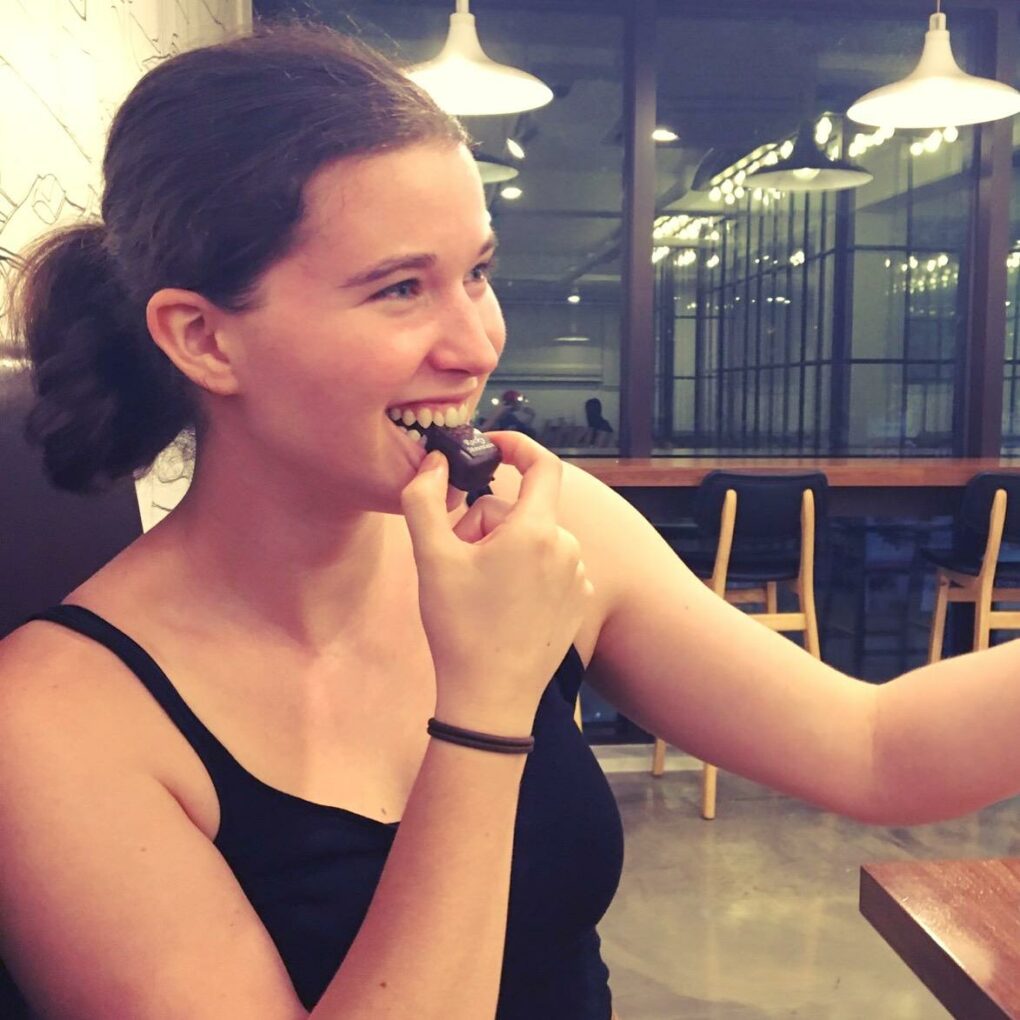




Comments
No Comments